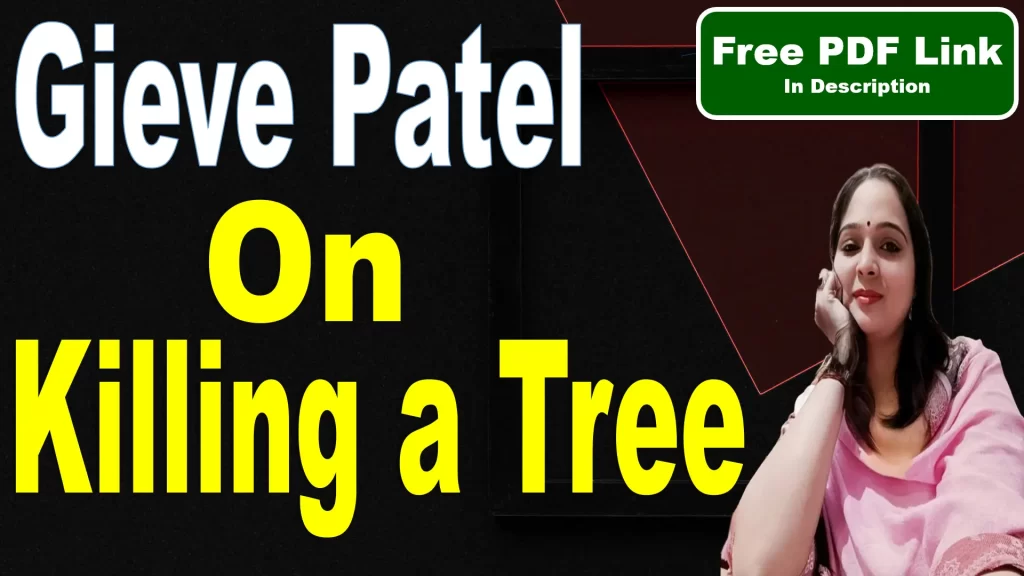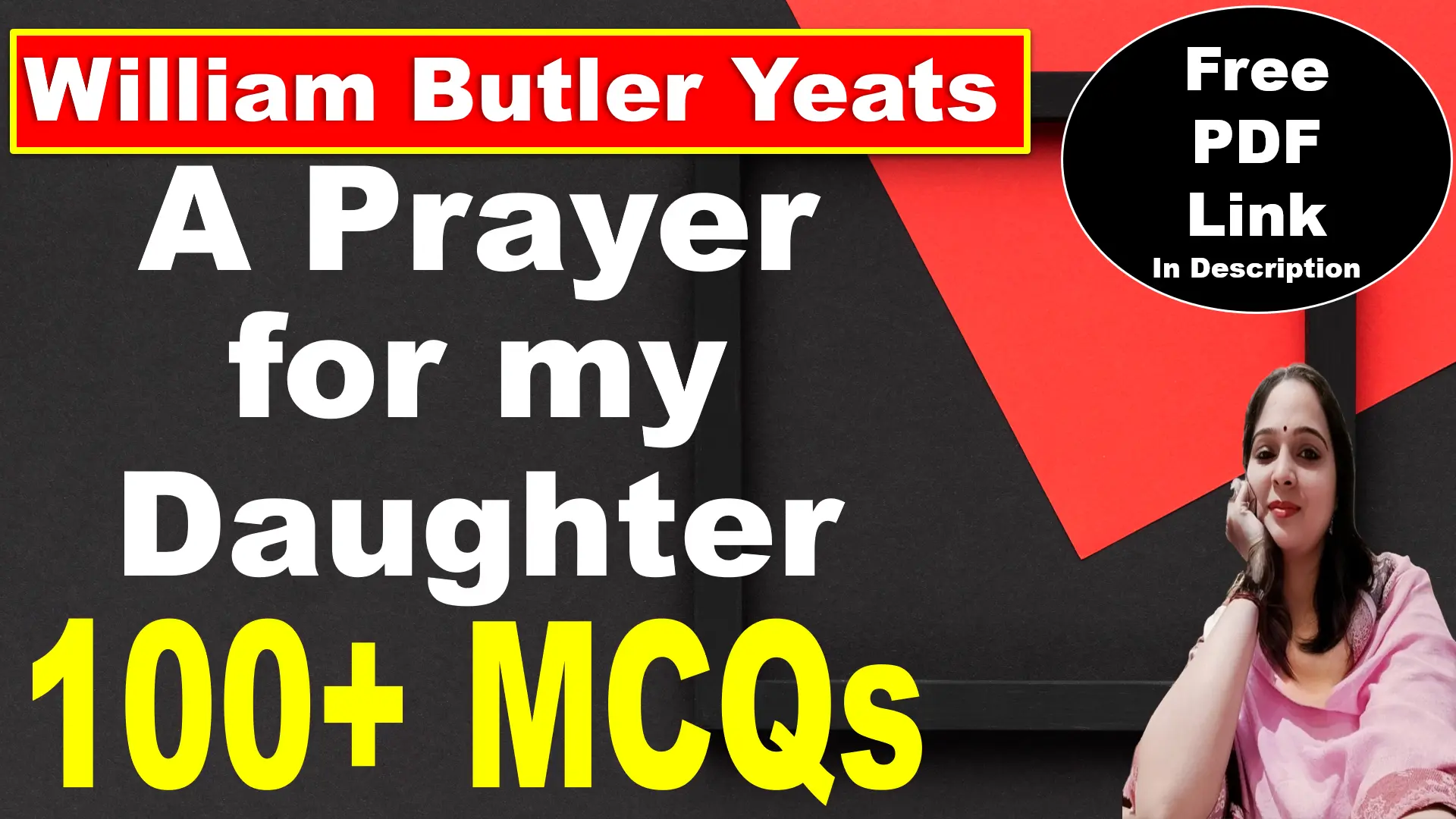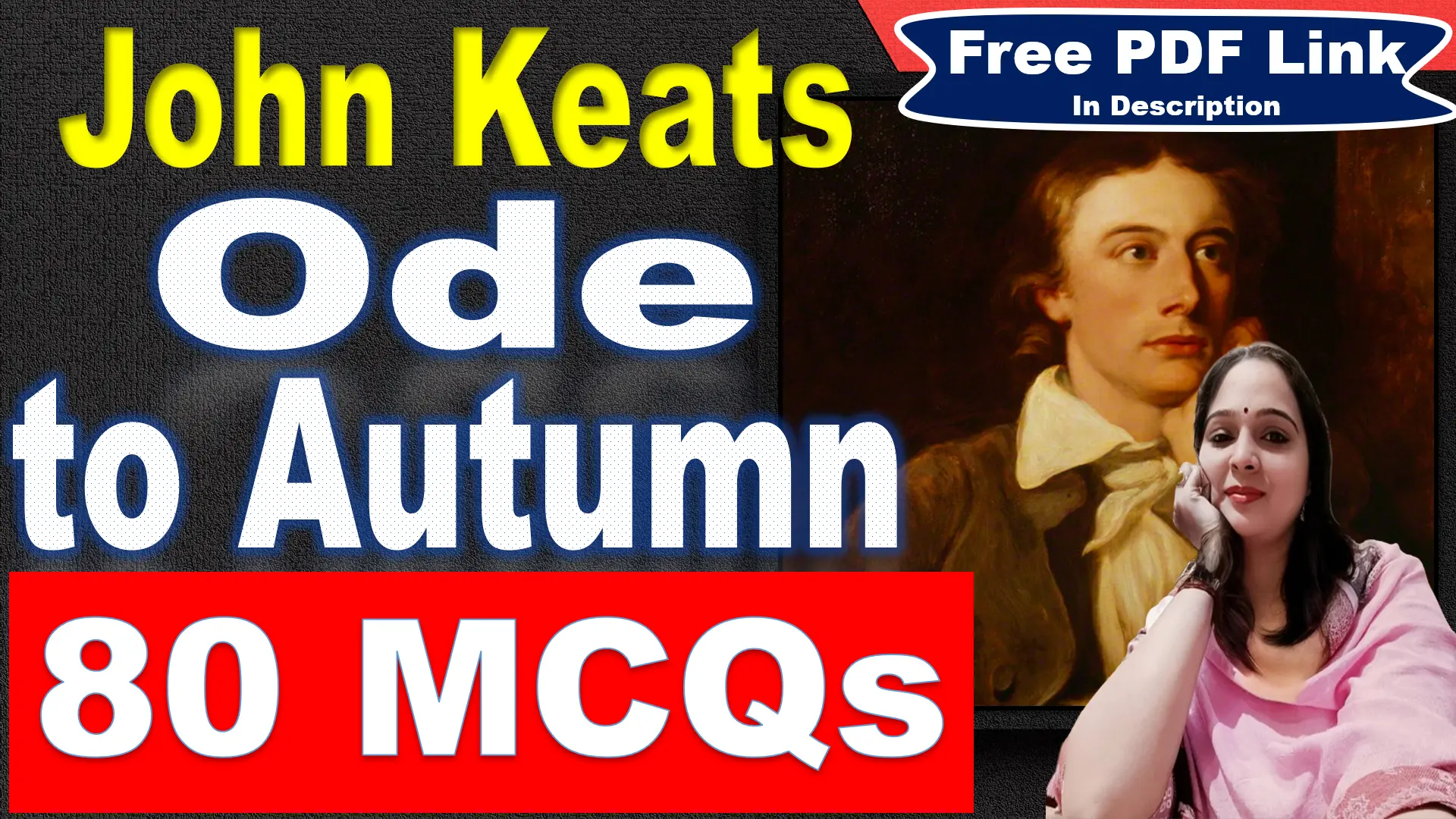
On Killing A Tree by Gieve Patel | On Killing A Tree | Gieve Patel | Explanation | Summary | Key Points | Word Meaning | Questions Answers | Critical Appreciation | Themes | Free PDF Download – Easy Literary Lessons
On Killing A Tree by Gieve Patel
It takes much time to kill a tree,
Not a simple jab of the knife
Will do it. It has grown
Slowly consuming the earth,
Rising out of it, feeding
Upon its crust, absorbing
Years of sunlight, air, water,
And out of its leprous hide
Sprouting leaves.
So hack and chop
But this alone wont do it.
Not so much pain will do it.
The bleeding bark will heal
And from close to the ground
Will rise curled green twigs,
Miniature boughs
Which if unchecked will expand again
To former size.
No,
The root is to be pulled out —
Out of the anchoring earth;
It is to be roped, tied,
And pulled out — snapped out
Or pulled out entirely,
Out from the earth-cave,
And the strength of the tree exposed
The source, white and wet,
The most sensitive, hidden
For years inside the earth.
Then the matter
Of scorching and choking
In sun and air,
Browning, hardening,
Twisting, withering,
And then it is done.
On Killing A Tree by Gieve Patel: Video Explanation
On Killing a Tree Poem Explanation
It takes much time to kill a tree,
Not a simple jab of the knife
Will do it. It has grown
Slowly consuming the earth,
Rising out of it, feeding
Upon its crust, absorbing
Years of sunlight, air, water,
And out of its leprous hide
Sprouting leaves.
Reference to Context:
These lines are from the poem “On Killing a Tree” by Gieve Patel, taken from his poetry collection “Poems” (1966). In this excerpt, the poet describes the resilience of a tree and how its life cannot be ended easily. This sets the tone for the entire poem, emphasizing the strength and deep-rooted connection of the tree with nature.
Explanation:
The poet states that killing a tree is not an easy task. A tree cannot be destroyed by a simple cut or jab with a knife. It has taken years for the tree to grow, nourishing itself by consuming resources from the earth, such as sunlight, air, and water. The poet metaphorically refers to the tree’s “leprous hide” (its rough, uneven bark), which symbolizes its natural but imperfect beauty. Despite its scars, the tree thrives, as evident from the sprouting of leaves. The poet portrays the tree as a living entity, resilient and deeply rooted in the earth.
This passage underscores the idea that life, whether that of a tree or a metaphorical representation of resilience, cannot be ended easily. It requires deliberate and thorough destruction.
Poetic devices:
Imagery: Vivid descriptions like “leprous hide,” “feeding upon its crust,” and “sprouting leaves” evoke visual and sensory images of the tree’s life and growth.
Personification: The tree is personified as a living being that “consumes,” “feeds,” and “absorbs,” suggesting its connection to the earth and its resilience.
Metaphor: The phrase “leprous hide” is a metaphor for the rough, diseased-looking bark of the tree, symbolizing its imperfect yet enduring nature.
Symbolism: The tree symbolizes resilience, life, and nature’s interconnectedness with the elements like earth, air, and water.
So hack and chop
But this alone wont do it.
Not so much pain will do it.
The bleeding bark will heal
And from close to the ground
Will rise curled green twigs,
Miniature boughs
Which if unchecked will expand again
To former size.
Reference to Context:
These lines are taken from the poem “On Killing a Tree” by Gieve Patel, a piece from his poetry collection “Poems” (1966). Here, the poet emphasizes the resilience of a tree, showing that superficial or partial destruction is insufficient to completely kill it. The passage explores the enduring strength of nature and its ability to regenerate.
Explanation:
The poet suggests that even hacking and chopping the tree will not be enough to destroy it. Though this causes damage and pain, symbolized by the “bleeding bark,” the tree will heal over time. New green shoots and miniature branches will grow again from the stump, restoring the tree to its original size if left unchecked. This resilience of the tree represents the persistence of life and nature’s ability to regenerate despite attempts at destruction.
The poet critiques human efforts to destroy nature, pointing out that such actions only cause temporary harm. The tree’s recovery symbolizes the strength of nature in the face of adversity. These lines underscore the theme that life cannot be easily erased, whether in the natural world or metaphorically in human struggles.
Poetic Device:
Personification: The tree is personified with phrases like “bleeding bark” and “heal,” giving it human-like qualities to evoke empathy and highlight its vitality.
Imagery: Vivid descriptions such as “bleeding bark,” “curled green twigs,” and “miniature boughs” create strong visual and sensory images of the tree’s ability to regenerate.
Alliteration: Repetition of consonant sounds, e.g., “bleeding bark” adds rhythm and emphasis.
Symbolism: The “bleeding bark” symbolizes the pain and harm inflicted upon nature, while the “curled green twigs” signify hope, resilience, and renewal.
Enjambment: The continuation of lines without pause mirrors the continuous cycle of destruction and regeneration in nature.
No,
The root is to be pulled out —
Out of the anchoring earth;
It is to be roped, tied,
And pulled out — snapped out
Or pulled out entirely,
Out from the earth-cave,
And the strength of the tree exposed
The source, white and wet,
The most sensitive, hidden
For years inside the earth.
Reference to Context:
These lines are from the poem “On Killing a Tree” by Gieve Patel, included in his poetry collection “Poems” (1966). In this passage, the poet describes the violent and final step necessary to completely kill a tree. It focuses on the effort needed to destroy something as deeply rooted as a tree, symbolizing the destruction of strength, resilience, and life itself.
Explanation:
The poet declares that superficial attempts like hacking or chopping are not enough to kill a tree. To completely destroy it, the root—its foundation and source of life—must be pulled out from the earth. The process is deliberate and forceful, involving tying and roping to yank the roots out of the soil. The “earth-cave” refers to the protective space in which the roots are deeply embedded. Once the roots are exposed, they are described as “white and wet,” signifying their sensitivity and vulnerability.
The poet uses this imagery to highlight the deep connection of the tree to the earth. The roots, hidden for years, symbolize the source of its strength and life. Their exposure marks the beginning of the tree’s ultimate death, showing how deeply entrenched and difficult it is to destroy life or anything firmly rooted in its foundation.
This passage serves as a metaphor for the challenges of eradicating something resilient, whether in nature, ideology, or relationships. It suggests that true destruction requires a complete and deliberate uprooting.
Poetic Device:
Imagery: Vivid descriptions such as “anchoring earth,” “earth-cave,” and “white and wet” create strong visual and tactile images of the roots and their connection to the soil.
Personification: The tree’s roots are described with human-like qualities, e.g., “the most sensitive, hidden,” evoking a sense of life and vulnerability.
Symbolism: The root symbolizes the foundation of life, strength, and resilience, while the act of uprooting represents thorough destruction or severing of deep connections.
Enjambment: The continuation of lines without punctuation mirrors the continuous and forceful action of uprooting the tree.
Metaphor: The “earth-cave” is a metaphor for the nurturing environment of the soil that sustains the tree’s roots.
Then the matter
Of scorching and choking
In sun and air,
Browning, hardening,
Twisting, withering,
And then it is done.
Reference to Context:
These lines are from the concluding part of “On Killing a Tree” by Gieve Patel, included in his poetry collection “Poems” (1966). Here, the poet describes the final stages of destroying a tree, emphasizing the long, deliberate process of its complete death after being uprooted.
Explanation:
After the tree has been uprooted and its roots exposed, the poet describes how the process of killing is completed. The uprooted tree is left to face the harsh elements of nature—scorching sunlight and drying air. This exposure leads to the tree browning, hardening, twisting, and withering over time. Eventually, the tree becomes lifeless, marking the end of its existence. The poet succinctly concludes with “And then it is done,” indicating the finality of destruction.
This passage symbolizes how life fades away once its foundation (represented by the roots) is severed. The poet highlights that the death of something so resilient is a gradual process, requiring persistence. It serves as a critique of humanity’s deliberate and calculated destruction of nature.
Poetic Device:
Imagery: Words like “scorching,” “browning,” “twisting,” and “withering” create vivid visual and sensory imagery of decay and death.
Personification: The tree is personified as it undergoes human-like suffering, such as “choking” and “withering,” evoking empathy for its plight.
Symbolism: The process of “browning and withering” symbolizes the inevitable decline of life when its support system is destroyed.
Enjambment: The flow of lines without punctuation mirrors the gradual yet continuous process of decay.





